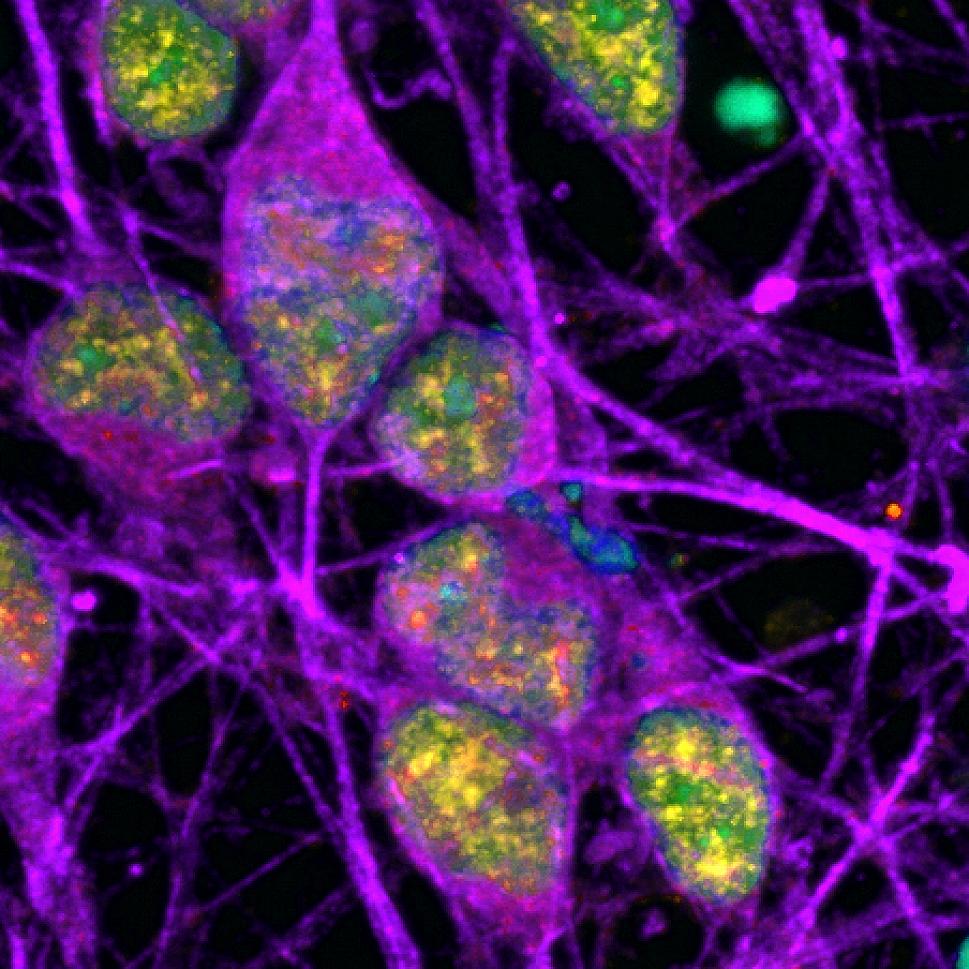
Researchers at the National Institutes of Health (NIH) have discovered specific regions within the DNA of neurons that accumulate a certain type of damage (called single-strand breaks or SSBs). This accumulation of SSBs appears to be unique to neurons, and it challenges what is generally understood about the cause of DNA damage and its potential implications in neurodegenerative diseases.
Because neurons require considerable amounts of oxygen to function properly, they are exposed to high levels of free radicals—toxic compounds that can damage DNA within cells. Normally, this damage occurs randomly. However, in this study, damage within neurons was often found within specific regions of DNA called “enhancers” that control the activity of nearby genes.
Fully mature cells like neurons do not need all of their genes to be active at any one time. One way that cells can control gene activity involves the presence or absence of a chemical tag called a methyl group on a specific building block of DNA. Closer inspection of the neurons revealed that a significant number of SSBs occurred when methyl groups were removed, which typically makes that gene available to be activated.
An explanation proposed by the researchers is that the removal of the methyl group from DNA itself creates an SSB, and neurons have multiple repair mechanisms at the ready to repair that damage as soon as it occurs. This challenges the common wisdom that DNA damage is inherently a process to be prevented. Instead, at least in neurons, it is part of the normal process of switching genes on and off. Furthermore, it implies that defects in the repair process, not the DNA damage itself, can potentially lead to developmental or neurodegenerative diseases.
This study was made possible through the collaboration between two labs at the NIH: one run by Michael E. Ward, M.D., Ph.D. at the National Institute of Neurological Disorders and Stroke (NINDS) and the other by Andre Nussenzweig, Ph.D. at the National Cancer Institute (NCI). Dr. Nussenzweig developed a method for mapping DNA errors within the genome. This highly sensitive technique requires a considerable number of cells in order to work effectively, and Dr. Ward’s lab provided the expertise in generating a large population of neurons using induced pluripotent stem cells (iPSCs) derived from one human donor. Keith Caldecott, Ph.D. at the University of Sussex also provided his expertise in single strand break repair pathways.
The two labs are now looking more closely at the repair mechanisms involved in reversing neuronal SSBs and the potential connection to neuronal dysfunction and degeneration.
